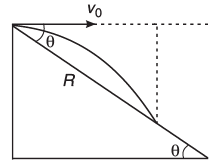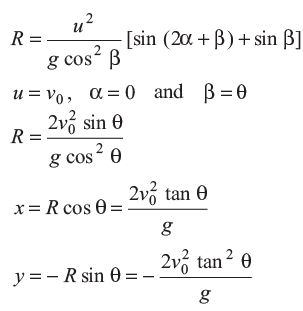Up the Plane
In this case direction x is chosen up the plane and direction y is chosen perpendicular to the plane.
Hence,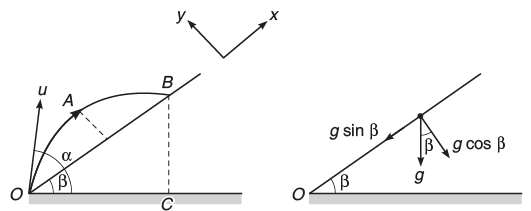

Now, let us derive the expressions for time of flight (T) and range (R) along the plane.
Time of Flight
At point B displacement along y-direction is zero. So, substituting the proper values in
sy = uyt + 1/2 αyt2, we get
0 = ut sin (α - β) + 1/2 (- g cos β)t2
⇒ ∴ t = 0 and
t = 0, corresponds to point O and t =  corresponds to point B. Thus,
corresponds to point B. Thus,
Note: Substituting β = 0, in the above expression, we get T = 2u sin α/g which is quite obvious because β = 0 is the situation shown in Fig.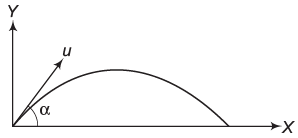
Range
Range (R) or the distance OB can be found by following two methods:
Method 1: Horizontal component of initial velocity is
uH = u cos α
∴ OC = uHT (as αH = 0)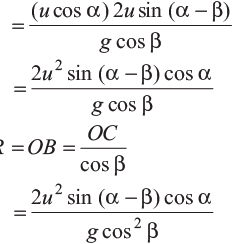

Range can also be written as,
This range will be maximum when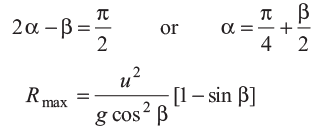
Here, also we can see that for β = 0, range is maximum at α = π/4 or α = 45°
Method 2:
Range (R) or the distance OB is also equal to the displacement of projectile along x-direction in time t = T . Therefore,
Substituting the values of ux, αx and T, we get the same result.
(ii) Down the Plane Here, x and y-directions are down the plane and perpendicular to plane respectively as shown in Fig. Hence,
ux = u cos (α + β), = αx = g sin β
uy = u sin (α + β), = αy = −g cos β
Proceeding in the similar manner, we get the following results:
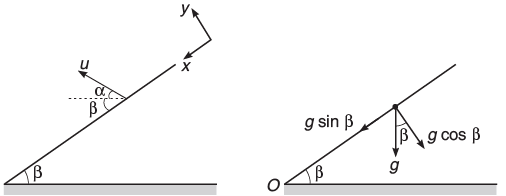
From the above expressions, we can see that if we replace β by −β, the equations of T and R for up the plane and down the plane are interchanged provided α (angle of projection) in both the cases is measured from the horizontal not from the plane.
Example: A man standing on a hill top projects a stone horizontally with speed v0 as shown in figure. Taking the co-ordinate system as given in the figure. Find the co-ordinates of the point where the stone will hit the hill surface.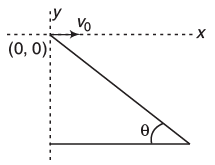
Range of the projectile on an inclined plane (down the plane) is,

